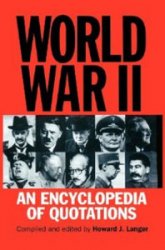If we view the concept of nationalism as a process by
which people in a given society gradually become aware
of themselves as members of a particular nation, with its
own culture and aspirations, then it is reasonable to seek
the beginnings of modern nationalism in the initial resistance
by the indigenous peoples to the colonial conquest
itself. Although essentially motivated by the desire
to defend traditional institutions, such movements reflected
a primitive concept of nationhood in that they
sought to protect the homeland from the invader. Thus
traditional resistance to colonial conquest may logically
be viewed as the first stage in the development of modern
nationalism.
Such resistance took various forms. For the most part,
it was led by the existing ruling class. In the Ashanti
kingdom in West Africa and in Burma and Vietnam in
Southeast Asia, the resistance to Western domination
was initially directed by the imperial courts. In some
cases, however, traditionalist elements continued to oppose
foreign conquest even after resistance had collapsed
at the center. In Japan, conservative elements opposed
the decision of the Tokugawa shogunate in Tokyo to accommodate
the Western presence and launched an abortive
movement to defeat the foreigners and restore Japan
to its previous policy of isolation (see Chapter 3). In India,
Tipu Sultan resisted the British in the Deccan after
the collapse of the Mughal dynasty. Similarly, after the
decrepit monarchy in Vietnam had bowed to French
pressure and agreed to the concession of territory in the
south and the establishment of a protectorate over the
remainder of the country, a number of civilian and military
officials set up an organization called Can Vuong (literally,
“Save the King”) and continued their resistance
without imperial sanction.
Sometimes traditional resistance had a religious basis,
as in the Sudan, where a revolt against the growing British
presence had strong Islamic overtones, although it
was initially provoked by Turkish misrule in Egypt. More
significant was the famous Sepoy Mutiny of 1857 in India.
The sepoys (derived from the Turkish word for “horseman”
or “soldier”) were native troops hired by the East
India Company to protect British interests in the region.
Unrest within Indian units of the colonial army had been
common since early in the century, when it had been
sparked by economic issues, religious sensitivities, or nascent
anticolonial sentiment. Such attitudes intensified in
the mid-1850s when the British instituted a new policy of
shipping Indian troops abroad—a practice that exposed
Hindus to pollution by foreign cultures. In 1857, tension
erupted when the British adopted the new Enfield rifle for
use by sepoy infantrymen. The new weapon was a muzzleloader
that used paper cartridges covered with animal fat
and lard; because the cartridge had to be bitten off, doing
so violated strictures against high-caste Hindus’ eating
animal products and Muslim prohibitions against eating
pork. Protests among sepoy units in northern India turned
into a full-scale mutiny, supported by uprisings in rural
districts in various parts of the country. But the revolt
lacked clear goals, and rivalries between Hindus and
Muslims and discord among leaders within each community
prevented coordination of operations. Although Indian
troops often fought bravely and outnumbered the
British by 240,000 to 40,000, they were poorly organized,
and the British forces (supplemented in many cases by sepoy
troops) suppressed the rebellion.
Still, the revolt frightened the British and led to a
number of major reforms. The proportion of native troops
relative to those from Great Britain was reduced, and
precedence was given to ethnic groups likely to be loyal
to the British, such as the Sikhs of Punjab and the Gurkhas,
an upland people from Nepal in the Himalaya
Mountains. To avoid religious conflicts, ethnic groups
were spread throughout the service rather than assigned
to special units. The British also decided to suppress the
final remnants of the hapless Mughal dynasty, which had
supported the mutiny.
As noted earlier, such forms of resistance cannot properly
be called nationalist because they were essentially attempts
to protect or restore traditional society and its institutions
and were not motivated by the desire to create
a nation in the modern sense of the word. In any event,
such movements rarely met with success. Peasants armed
with pikes and spears were no match for Western armies
possessing the most terrifying weapons then known to human
society, including the Gatling gun, the first rapid-fire
weapon and the precursor of the modern machine gun.




 World History
World History









